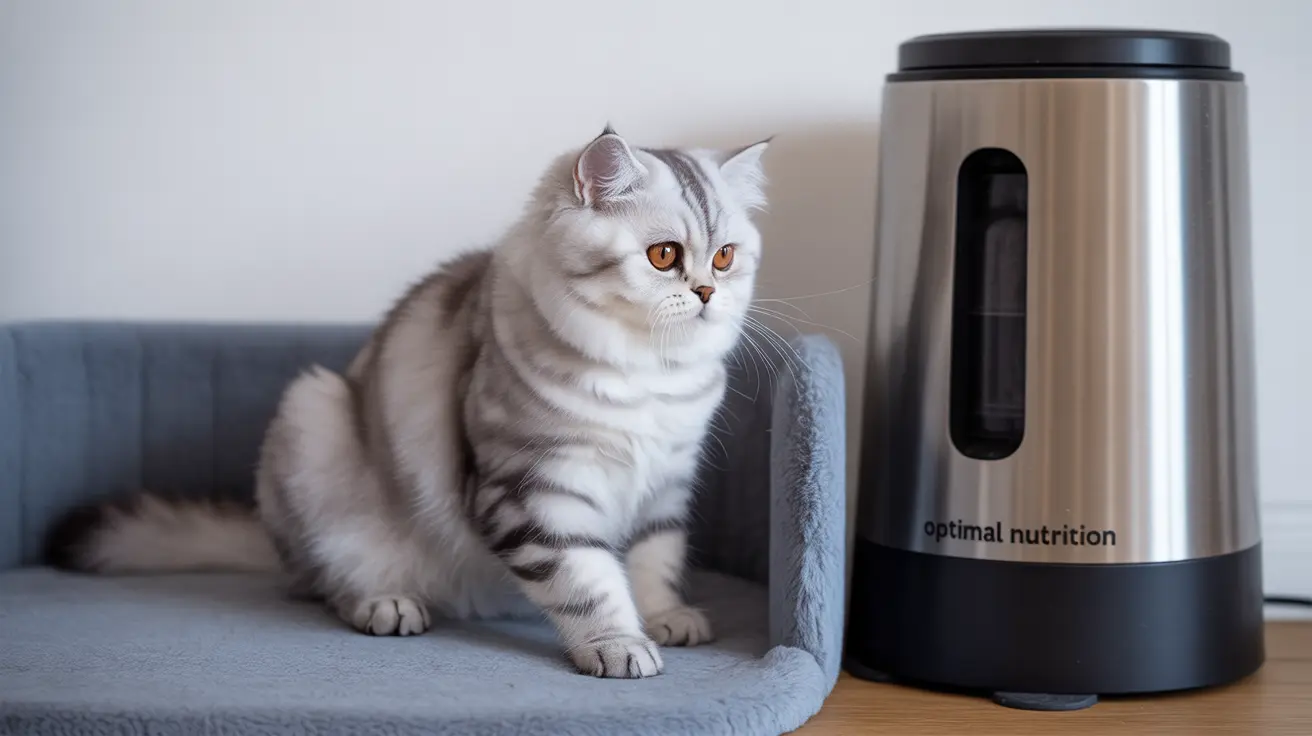Creating Separate Feeding Stations
The first step in managing multiple cats' feeding habits is establishing distinct feeding areas. Each cat should have their own designated space, preferably in different rooms or at different heights.
Consider these effective placement strategies:
- Set up feeding stations in separate rooms
- Use vertical space with cat trees or shelves
- Place food bowls around corners from each other
- Create feeding nooks in quiet, low-traffic areas
Implementing Scheduled Feeding Times
Free-feeding is often the root cause of overfeating problems. Instead, establish regular meal times, typically 2-3 times daily, to better control portions and monitor each cat's intake.
Benefits of scheduled feeding include:
- Better portion control
- Easier monitoring of individual eating habits
- Reduced competition and food anxiety
- More structured routine for both cats and owners
Using Technology to Control Access
Modern feeding solutions can significantly improve mealtime management. Microchip-activated feeders are particularly effective when dealing with an overeating cat.
These devices:
- Only open for the designated cat
- Control portion sizes
- Prevent food stealing
- Track eating patterns
- Reduce feeding-related stress
Slowing Down the Fast Eater
For cats that eat too quickly, several tools and techniques can help regulate their eating speed:
- Puzzle feeders and food mazes
- Slow-feeder bowls with obstacles
- Food balls that dispense kibble gradually
- Spreading food across a lick mat
- Using multiple small bowls instead of one large one
Managing Different Dietary Needs
When cats require different diets due to health conditions or weight management needs, separation becomes crucial. Create a feeding schedule that ensures each cat gets their appropriate nutrition without access to the other's food.
Frequently Asked Questions
How can I stop one cat from overeating when feeding two cats together?
Use separate feeding stations in different rooms, implement scheduled feeding times, and consider microchip-activated feeders to prevent food stealing. Monitor portions carefully and remove uneaten food after mealtimes.
What are the best ways to feed two cats separately to prevent food guarding?
Feed cats in different rooms, at different heights, or use physical barriers. Establish consistent feeding schedules and ensure each cat has their own dishes and feeding space away from the other.
Can automatic microchip feeders help manage feeding when one cat overeats?
Yes, microchip feeders are highly effective as they only open for the designated cat, preventing unauthorized access to food. They can be programmed with specific portion sizes and feeding schedules.
How often and in what locations should I feed two cats to reduce mealtime stress?
Feed cats 2-3 times daily in quiet, separate locations. Choose spots that align with each cat's comfort zone, such as elevated areas for cats who prefer height and ground-level spots for less agile cats.
What are effective methods to slow down a cat that eats too quickly when feeding multiple cats?
Use slow-feeder bowls, puzzle feeders, or food dispensing toys. Spread food across multiple small dishes or use automated feeders that dispense food gradually throughout the meal.
Conclusion
Successfully managing how to feed two cats when one overeats requires patience, consistency, and the right tools. By implementing separate feeding stations, scheduled mealtimes, and appropriate feeding tools, you can create a stress-free dining environment that keeps both cats healthy and happy.
Remember to monitor both cats' weights and eating behaviors regularly, and consult with your veterinarian if significant problems persist despite these management strategies.






